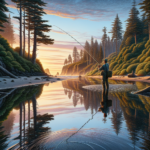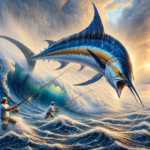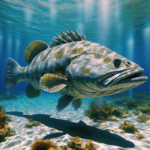Fly Fishing for Trout in Colorado’s Mountain Rivers

Introduction
Imagine standing knee-deep in a crystal-clear mountain river, surrounded by the breathtaking scenery of Colorado’s Rockies, as you cast your line in hopes of catching a beautiful, elusive trout. Did you know that Colorado boasts over 9,000 miles of trout streams and more than 2,000 lakes and reservoirs? This makes it a premier destination for fly fishing enthusiasts from around the world.
In this article, we will delve into the art of fly fishing for trout in Colorado’s mountain rivers. We will cover everything from the historical and cultural significance of fly fishing in this region to the best techniques, gear, and locations. Whether you are a seasoned angler or a beginner, this guide will provide you with valuable insights to enhance your fishing experience in Colorado.
Understanding the nuances of fly fishing in Colorado’s mountain rivers is crucial for anyone looking to make the most of their fishing trips. From finding the best fishing spots to mastering specific techniques, this article aims to equip you with the knowledge you need for a successful and enjoyable fly fishing adventure.
Background/Context
Historical or Cultural Significance
Fly fishing has a rich history in Colorado, dating back to the late 19th century when settlers and miners first began exploring the state’s abundant waterways. Over the years, it has evolved into a beloved pastime and a significant part of Colorado’s outdoor culture. The state’s diverse ecosystems and pristine rivers have made it a haven for fly fishing enthusiasts, contributing to its reputation as one of the top fly fishing destinations in the United States.
Geographical Overview
Colorado’s mountain rivers are characterized by their clear, cold waters, which are ideal for trout. The state’s diverse topography includes high-altitude alpine streams, meandering meadow creeks, and fast-flowing rivers, each offering unique fishing opportunities. The climate varies significantly with elevation, but generally, the fishing season runs from late spring to early fall, with peak conditions in the summer months.
Key Points/Details
Fishing Techniques
Technique Overview
Fly fishing is the predominant technique used for trout fishing in Colorado’s mountain rivers. This method involves using a lightweight fly rod, reel, and specialized line to cast artificial flies that mimic the insects trout feed on. There are several sub-techniques within fly fishing, including dry fly fishing, nymph fishing, and streamer fishing.
When and Where to Use
Dry fly fishing is most effective during hatches when insects are abundant on the water’s surface. Nymph fishing, which involves using subsurface flies, is ideal for deeper waters and when trout are feeding below the surface. Streamer fishing, using larger flies that imitate baitfish, is best for targeting larger trout in faster-moving waters.
Recommended Gear
- Rods: A 9-foot, 5-weight rod is versatile and suitable for most conditions in Colorado.
- Reels: A quality reel with a smooth drag system is essential for handling strong trout.
- Lines: Floating lines are standard, but having a sinking line can be useful for deeper waters.
- Flies: Stock up on a variety of dry flies, nymphs, and streamers to match local hatches and conditions.
Species Information
Species Overview
Colorado’s mountain rivers are home to several trout species, including rainbow trout, brown trout, brook trout, and the native cutthroat trout. Each species has unique habits and preferred habitats:
- Rainbow Trout: Known for their acrobatic fights, they prefer fast-moving, oxygen-rich waters.
- Brown Trout: Often found in deeper pools and undercut banks, they are more nocturnal and wary.
- Brook Trout: Typically inhabit smaller, colder streams and are known for their vibrant colors.
- Cutthroat Trout: Native to Colorado, they thrive in high-altitude streams and lakes.
Best Practices
To successfully catch these trout species, consider the following tips:
- Match the Hatch: Use flies that mimic the local insect population.
- Stealth: Approach fishing spots quietly to avoid spooking the fish.
- Presentation: Ensure your fly lands softly and drifts naturally with the current.
- Timing: Early morning and late evening are often the best times to fish.
Location Information
Top Fishing Spots
Colorado offers numerous prime fishing locations, including:
- South Platte River: Known for its trophy-sized trout and diverse fishing conditions.
- Gunnison River: Offers excellent fishing in a stunning canyon setting.
- Arkansas River: Renowned for its prolific hatches and abundant brown trout.
- Blue River: A tailwater fishery with consistent flows and large trout.
Regulations and Licenses
Before fishing in Colorado, ensure you have a valid fishing license, which can be purchased online or at local retailers. Be aware of specific regulations for each water body, including catch limits, size restrictions, and seasonal closures. Practicing catch and release is encouraged to preserve fish populations.
Seasonal Considerations
Seasonal Variations
Fishing conditions in Colorado’s mountain rivers change with the seasons:
- Spring: Snowmelt can cause high, fast-flowing waters, but fishing improves as levels stabilize.
- Summer: Peak fishing season with abundant insect hatches and active trout.
- Fall: Cooler temperatures and lower water levels make for excellent fishing, especially for brown trout.
- Winter: Limited fishing opportunities, but tailwaters and lower elevation streams can still be productive.
Best Times to Fish
The optimal times to fish are early morning and late evening when trout are most active. Overcast days can also provide excellent fishing conditions, as trout are less wary and more likely to feed.
Events and Tournaments
Event Overview
Colorado hosts several fly fishing events and tournaments throughout the year, such as the Colorado Trout Unlimited River Clean-Up and the South Platte Pro-Am Fly Fishing Tournament. These events offer opportunities to connect with fellow anglers, learn new techniques, and contribute to conservation efforts.
Preparation Tips
To prepare for these events, ensure your gear is in top condition, practice your casting techniques, and familiarize yourself with the event rules and regulations. Participating in local fly fishing clubs can also provide valuable insights and support.
Tips and Best Practices
General Tips
- Research: Study local fishing reports and hatch charts to plan your trips effectively.
- Practice Casting: Regular practice will improve your accuracy and presentation.
- Stay Mobile: Be willing to move to different spots if the fish aren’t biting.
Avoid Common Mistakes
- Overcasting: Avoid casting too far and spooking the fish; focus on accuracy instead.
- Ignoring Local Advice: Listen to local anglers and guides for valuable tips and insights.
- Neglecting Gear Maintenance: Regularly check and maintain your gear to prevent failures on the water.
Advanced Techniques
- Double Haul Cast: Mastering this technique can help you cast longer distances and handle windy conditions.
- Indicator Nymphing: Using a strike indicator can improve your success with nymph fishing.
- Euro Nymphing: This technique involves using a longer rod and specialized leader for precise nymph presentations.
Gear and Equipment Recommendations
Essential Gear
- Fly Rod: A 9-foot, 5-weight rod is versatile for most conditions.
- Fly Reel: A quality reel with a smooth drag system.
- Fly Line: Floating line for general use, with optional sinking line for deeper waters.
- Flies: A variety of dry flies, nymphs, and streamers.
- Waders and Boots: Waterproof waders and sturdy boots for wading in cold waters.
Optional Gear/Upgrades
- Wading Staff: For added stability in fast-moving waters.
- Fly Fishing Vest: To keep your gear organized and easily accessible.
- Polarized Sunglasses: To reduce glare and spot fish more easily.
Where to Buy or Rent
Local fly shops in Colorado, such as Angler’s Covey in Colorado Springs and Trouts Fly Fishing in Denver, offer a wide range of gear and expert advice. Online retailers like Orvis and Cabela’s also provide extensive selections of fly fishing equipment.
Safety and Conservation
Safety Tips
- Weather Considerations: Always check the weather forecast and be prepared for sudden changes.
- Wildlife Hazards: Be aware of local wildlife, including bears and snakes, and know how to respond to encounters.
- Wading Safety: Use a wading staff and move slowly to avoid slipping on rocks.
Conservation Practices
- Catch and Release: Handle fish gently and release them quickly to minimize stress.
- Respect Wildlife: Avoid disturbing wildlife and their habitats.
- Follow Regulations: Adhere to local fishing regulations and report any violations.
Planning Your Trip
Accommodations
There are numerous lodging options near Colorado’s top fishing spots, ranging from rustic cabins and campgrounds to luxury resorts. Popular choices include the Broadmoor in Colorado Springs and the Taylor River Lodge near Gunnison.
Travel Tips
Colorado is accessible by major highways and airports, including Denver International Airport. Renting a car is recommended for exploring remote fishing locations. Be prepared for varying road conditions, especially in mountainous areas.
Additional Activities
In addition to fishing, Colorado offers a wealth of outdoor activities, including hiking, mountain biking, and wildlife viewing. Visiting nearby national parks, such as Rocky Mountain National Park, can enhance your trip experience.
Frequently Asked Questions (FAQs)
What is the best time of year to fly fish for trout in Colorado?
The best time to fly fish for trout in Colorado is from late spring to early fall, with peak conditions in the summer months.
Do I need a fishing license to fish in Colorado?
Yes, a valid fishing license is required to fish in Colorado. Licenses can be purchased online or at local retailers.
What are the most common trout species in Colorado’s mountain rivers?
The most common trout species in Colorado’s mountain rivers are rainbow trout, brown trout, brook trout, and cutthroat trout.
What gear do I need for fly fishing in Colorado?
Essential gear includes a fly rod, reel, line, a variety of flies, waders, and boots. Optional gear includes a wading staff, fly fishing vest, and polarized sunglasses.
Conclusion
Fly fishing for trout in Colorado’s mountain rivers offers an unparalleled experience for anglers of all skill levels. With its rich history, diverse ecosystems, and abundant trout populations, Colorado is a premier destination for fly fishing enthusiasts. By understanding the best techniques, gear, and locations, you can enhance your fishing adventures and create lasting memories in the stunning landscapes of Colorado.
Whether you are planning your first trip or looking to refine your skills, this guide provides the essential information you need to succeed. So grab your gear, head to the mountains, and enjoy the thrill of fly fishing in Colorado’s pristine rivers.




